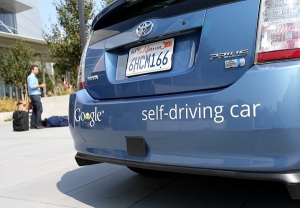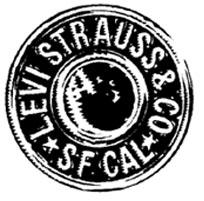
Despite having a a population of less than a million, much smaller than nearby San Jose, San Francisco has become the richest of cities. It has the youngest population, the least children and the highest i-phone use in the country.
Surrounded by water on three sides , like Manhattan, but located on 74 hills, it is said there is an “island mentality “ to San Francisco. It was described by poet laureate Laurence Ferlinghetti as being “indeed an offshore province, not really part of mainland America”.
The City’s exudes a liberal feeling not found in many other cities in the US – years ago, the American poet Kenneth Rexroth explained that its liberal traditions reflect the fact that it was the only city that was not settled by the westward spreading puritan tradition. Instead, San Francisco has thrived as a place of great contrasts ever since the days of Levi Strauss stapling rivets into working clothes to make his, b y now eponymous, creations.
y now eponymous, creations.
There may be 400 banks, 20 universities and some of the most valuable property in the country, however, at the same time, it has the least home ownership and the highest rental population. Much of this due to a policy of strict rent control that is strongly enforced in San Francisco. In older properties (anything built before June of 1979), landlords may only increase the rent by a token annual percentage (1.9% in 2013-2014), so although an average 1 bedroom apartment may rent for $2,700 per month, many pay only $700 or less. It encourages tennants to stay, some for a lifetime.
I recently toured the city with my brilliant colleague, Craig Smith, city guide and authentic insider, who explained that centuries ago there were virtually no trees here when the Spanish arrived but that years of careful cultivation and a suitable Mediterranean-type climate transformed the landscape. Everything grows in this idyllic environment including many exotic shrubs and plants.

Only the eucalyptus is avoided because the dry leaves and bark are a constant fire hazard. Redwood, disliked by termites,was particularly popular in constructing the many huge Victorian and Queen Anne style houses while the windy climate meant few insects, so no need for nets or air-conditioning, making elegant bay windows a prominent architectural feature.
Facing the bay, the fabled Pacific Heights on the northern side of the city has some of the most valuable real estate in the United States. The major attraction for many are the world’s most beautiful urban views with a panorama from Alcatraz to Sausalito and the Golden Gate Bridge. It is also firmly anchored on bedrock, so many buildings survived both the 1906 earthquake and the fire that followed.
I asked Craig if, like so many others in San Francisco, Pacific Heights would be his location of choice assuming money to be of no object but he instantly answered “no, Sausalito”.
 The former home town of Zen master Alan Watts and actor Robert Redford, Sausalito, has a relaxed style, warmer temperatures and proximity to both the scenic Marin headlands and wine producing NapaValley. It would certainly make a great choice!
The former home town of Zen master Alan Watts and actor Robert Redford, Sausalito, has a relaxed style, warmer temperatures and proximity to both the scenic Marin headlands and wine producing NapaValley. It would certainly make a great choice!




 Seismic activity is a primary concern on the famous bridges. When the Golden Gate Bridge was opened in 1937 it was thought capable of resisting any conceivable earthquake. It is still considered a technical masterpiece, but recent research suggested the possibility of a collapse at the city side, Fort Point supporting arch, leading to a 392 million strengthening retrofit.
Seismic activity is a primary concern on the famous bridges. When the Golden Gate Bridge was opened in 1937 it was thought capable of resisting any conceivable earthquake. It is still considered a technical masterpiece, but recent research suggested the possibility of a collapse at the city side, Fort Point supporting arch, leading to a 392 million strengthening retrofit.